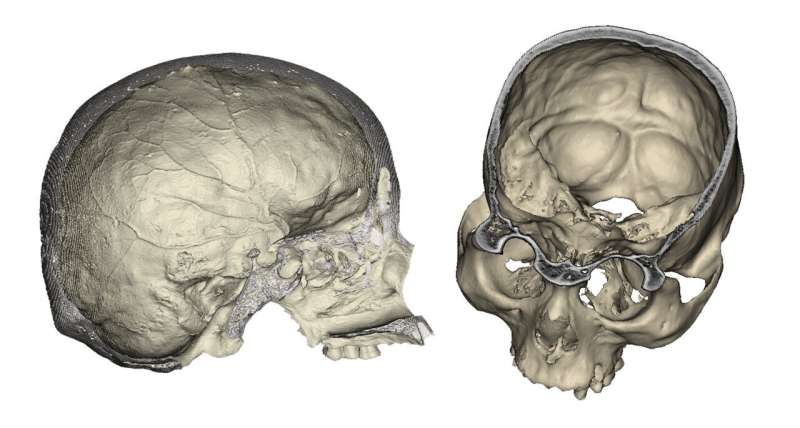Study of the internal vascular system of the skull in American populations of the late Holocene

This week, the journal The Anatomical Record has published a study coordinated by Emiliano Bruner, who leads the Paleoneurology Group at the Centro Nacional de Investigación sobre la Evolución Humana (CENIEH), that analyzes the distribution of certain craniovascular traits in four native populations from the late Holocene in the southernmost regions of South America.
The sample includes 70 skulls, dated to between 200 and 3,000 years old, from populations of four regions in Argentina: the pampas (Buenos Aires), southern Andes (Salta), central Patagonia (Chubut), and southern Patagonia (Tierra del Fuego). The four groups do not present substantial differences although, as has been observed in other craniology studies, the inhabitants of Tierra de Fuego have a more distinctive anatomy.
The results of this analysis show that the size and artificial deformation of the skull have a minor or null influence on these vascular traits. However, the American skulls do show differences from the European ones, and have more highly developed posterior vascular networks.
These vessels are responsible for managing the flow of blood within the skull cavity, by regulating part of what passes in and out. "It remains to be seen whether the differences described are due to casual factors of the American population, or specific influences of the environment," says Bruner.
In the latter case, these could be physiological influences, due to individual metabolic responses, or genetic ones associated to environmental adaptations. Altitude or climate could be important factors in this case, if we consider that these arteries and veins could be implicated in the thermal regulation of the skull cavity and the brain.
This work was led by Stanislava Eisová of the National Museum of Prague (Czech Republic), and also availed of the collaboration of the Konrad Lorenz Institute for Evolution and Cognition Research (Austria).
More information: Stanislava Eisová et al, Craniovascular variation in four late Holocene human samples from southern South America, The Anatomical Record (2022). DOI: 10.1002/ar.25017
Provided by CENIEH





















